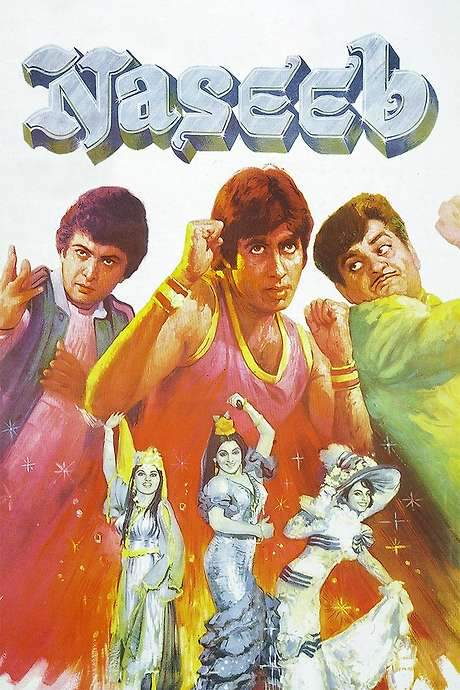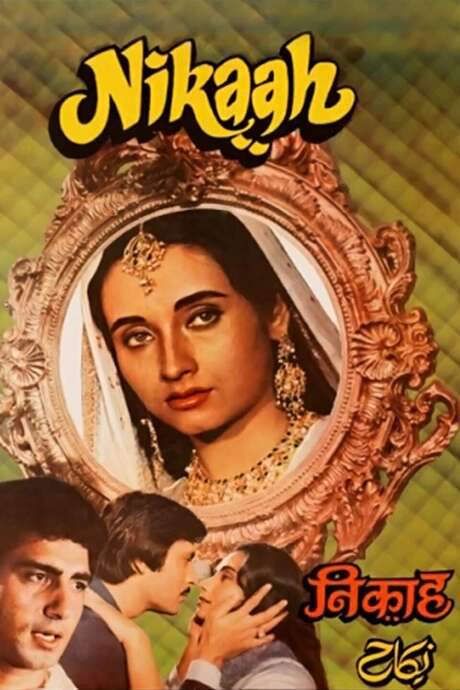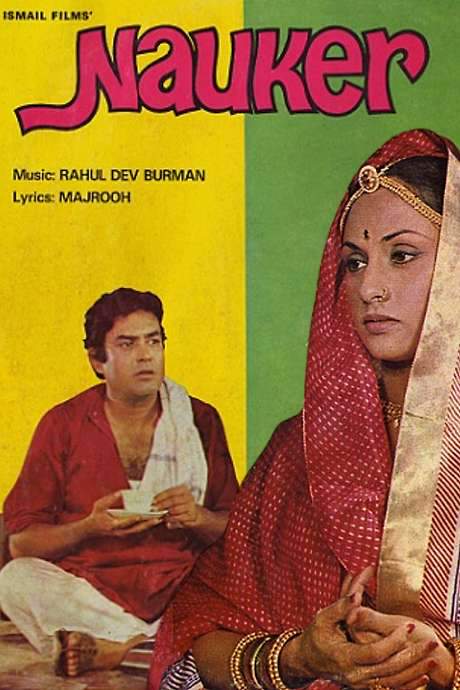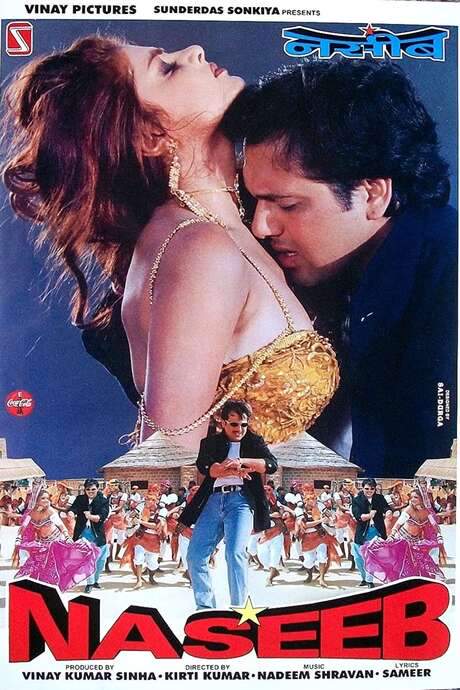
Naseeb Apna Apna
Year: 1986
Runtime: 140 mins
Language: Hindi
Director: Rama Rao Tatineni
Bhim Singh forces his son Kishan to marry Chanda despite protests. After Kishan gets a job in Bombay, Bhim orders him to bring Chanda there, saying she belongs with him. In Bombay, Chanda discovers Kishan is married to Radha, leaving her to decide whether to expose his life, return home, or take a step, while Radha faces her own choice.
Warning: spoilers below!
Haven’t seen Naseeb Apna Apna yet? This summary contains major spoilers. Bookmark the page, watch the movie, and come back for the full breakdown. If you're ready, scroll on and relive the story!
Naseeb Apna Apna (1986) – Full Plot Summary & Ending Explained
Read the complete plot breakdown of Naseeb Apna Apna (1986), including all key story events, major twists, and the ending explained in detail. Discover what really happened—and what it all means.
Chando is introduced as an innocent girl whose plain looks and modest styling make her the subject of unkind judgments. The story opens with a father’s patient hopes and a family’s quiet worries: Chando’s father, Ramlal, along with Kishan’s father, Bhim’s own long friendship adds pressure to find a suitable match for Chando. In this social landscape, Bhim is a dominant, controlling figure who believes that it is his duty to secure a marriage for his son, even if it means deciding the life of another family without seeking consent. The tension between tradition and personal choice crests as Bhim arranges the marriage between Kishan and Chando, ignoring Kishan’s doubts and the closeness of their fathers’ alliance.
Kishan is a young salesman full of dreams about a future partner who will share his ambitions and his inner world. Yet his heart is shadowed by fear of his father’s rigid expectations. He is eager for a life that feels truly his own, not one dictated by parental authority. The moment Bhim’s decision lands on Kishan, the young man confronts a reality that clashes with his own wishes. The looming arrangement makes him resent his future wife before he even meets her, and the knowledge that his affections could conflict with his father’s plans casts a long, uneasy shadow over the wedding. On the day of the ceremony, Kishan’s reluctance is palpable, and the marriage unfolds under a cloud of unease.
Chando emerges into a household that does not celebrate her for what she might become, but rather judges her by appearance and social expectations. After the wedding, Kishan struggles to bridge the widening gap between his duties as a husband and his own longing for independence. He tolerates the marriage, but he does not share his life with her, and the distance between them grows. Meanwhile, Chando moves forward with a quiet dignity, serving her in-laws and her husband with a tenderness that contrasts with Kishan’s coldness. In her heart, she remains devoted to the idea of a harmonious union, even as the reality proves to be more complicated than she had ever imagined.
Meanwhile, a different chapter unfolds in Bombay when Kishan earns a recognition award for his work and encounters Radha, a striking and accomplished woman from the city who has already carved out her own dreams. Radha is beautiful and modern, a fresh breath of possibility in Kishan’s life. The connection between them is instantaneous and warm, fueled by shared achievements and a growing sense of belonging. As Kishan returns to the office, he discovers that a friend has been transferred to Bombay, a change that tempts him toward a new life and away from his current burdens. A plan forms in his mind: he will take the Bombay transfer, not only to pursue a career but to escape the pressures of an unhappy marriage.
Upon arriving in Bombay, Kishan’s path unexpectedly intersects with Radha’s world. He finds himself at Radha’s doorstep and, though married, chooses to stay there under a harmless pretense, concealing the truth from everyone around him. A spark develops between the two, and as days pass, Kishan and Radha marry, stepping into a new life that feels freer and brighter. The emotional stakes heighten as Kishan’s secret life becomes a tangible reality: Radha believes she has a new partner who shares her dreams, while Chando remains back at home, still bound to the life she started with Kishan. The conflict intensifies as Kishan’s father, Bhim, becomes aware of his son’s decision and demands that Kishan bring Chando to Bombay, insisting on the dignity of his family’s honor.
The journey back to the city marks a turning point. Kishan reluctantly brings Chando along, only to discover that Radha is moving back into his life as well. In a cruel moment of confusion and betrayal, Kishan leaves Radha and Chando in a precarious arrangement, and Radha later arrives at the home with a sense of ownership over Kishan’s life. In a scene that reveals the fragile lines between loyalty and desire, Chando ends up in Kishan’s house not as a wife in the traditional sense, but as a maid who must navigate a complicated social maze. She is introduced to the life of a mistress of the home, even though her marriage remains in force and her heart remains loyal to Kishan.
Chando’s resilience begins to shape the household in subtle, transformative ways. She moves through the rooms with quiet strength, earning the respect of Radha, who initially sees her as a threat but gradually comes to rely on her as a sister of sorts. The two women form an unexpected bond, built on shared hardships and the mutual longing for stability in a life that has become complicated far beyond the original plans. Chando teaches Radha the ropes of traditional womanhood and, in turn, Radha helps Chando feel seen and valued beyond mere domestic duties. Radha’s admiration for Chando grows, and Deepak, Kishan’s brother-in-law, finds himself drawn to Chando’s gentle nature and steadfast devotion. Deepak’s interest is sincere, but Chando remains steadfast in her loyalty to Kishan, refusing any advances with grace and firmness.
As the family dynamics unfold, Kishan begins to realize the depth of the life he has neglected. He overhears a private exchange between the two women and a fateful truth emerges: his life is not merely a two-person story but a tangled web that binds several hearts. The moment of reckoning arrives when Radha learns the truth about Kishan’s wife and his obligations. Her pride, her own sense of self-worth, and the dream she had built with Kishan collide with the reality of marriage and fidelity. The tension between desire, duty, and loyalty erupts in a confrontation that leaves the household in turmoil. The emotional fallout is severe: Radha’s anger turns to despair, and in a moment of anguish, she turns a knife on herself.
Chando and Kishan’s relationship stands at a precipice. Chando’s selfless desire to protect her husband’s happiness remains intact even as Radha’s tragedy reshapes the family’s future. In a final, devastating twist, Radha’s act exposes the fragility of their world and the consequences of choices made in the name of love, even when those choices are made with glimpses of sincerity. Radha’s suicide becomes a turning point that exposes the price of competing loyalties and the loneliness that can accompany those who chase happiness at the expense of others. Kishan is left to endure a life shadowed by guilt, a reminder of how love, duty, and deception can converge to create irrevocable outcomes.
In the end, the story unfolds as a meditation on the limits of social expectations, personal longing, and the quiet strength of those who endure. Chando’s quiet devotion, Radha’s bright ambitions, Kishan’s confusion, and the stern moral equations imposed by Bhim together illuminate a world where love must navigate a maze of tradition, pride, and sacrifice. The narrative closes not with easy resolutions but with a stark, poignant acknowledgment: the path to happiness can be jagged and fraught, and the human heart bears the scars of choices made under pressure.
Last Updated: October 09, 2025 at 14:27
Unlock the Full Story of Naseeb Apna Apna
Don't stop at just watching — explore Naseeb Apna Apna in full detail. From the complete plot summary and scene-by-scene timeline to character breakdowns, thematic analysis, and a deep dive into the ending — every page helps you truly understand what Naseeb Apna Apna is all about. Plus, discover what's next after the movie.
Naseeb Apna Apna Timeline
Track the full timeline of Naseeb Apna Apna with every major event arranged chronologically. Perfect for decoding non-linear storytelling, flashbacks, or parallel narratives with a clear scene-by-scene breakdown.

Similar Movies to Naseeb Apna Apna
Discover movies like Naseeb Apna Apna that share similar genres, themes, and storytelling elements. Whether you’re drawn to the atmosphere, character arcs, or plot structure, these curated recommendations will help you explore more films you’ll love.
Explore More About Movie Naseeb Apna Apna
Naseeb Apna Apna (1986) Scene-by-Scene Movie Timeline
Naseeb Apna Apna (1986) Movie Characters, Themes & Settings
Naseeb Apna Apna (1986) Spoiler-Free Summary & Key Flow
Movies Like Naseeb Apna Apna – Similar Titles You’ll Enjoy
Kahin Pyaar Na Ho Jaaye (2000) Plot Summary & Ending Explained
Kuch Naa Kaho (2003) Story Summary & Characters
Naseeb (1981) Complete Plot Breakdown
Nadiya Ke Paar (1982) Ending Explained & Film Insights
Naukar Biwi Ka (1983) Ending Explained & Film Insights
Kissi Se Na Kehna (1983) Spoiler-Packed Plot Recap
Nikaah (1982) Plot Summary & Ending Explained
Naseeb Apna Apna (1986) Movie Recap & Themes
Nikaah (1982) Detailed Story Recap
Chaand Kaa Tukdaa (1994) Story Summary & Characters
Dil Kya Kare (1999) Detailed Story Recap
Naya Din Nai Raat (1974) Story Summary & Characters
Naseem (1995) Detailed Story Recap
Nauker (1979) Detailed Story Recap
Naseeb (1998) Story Summary & Characters

















